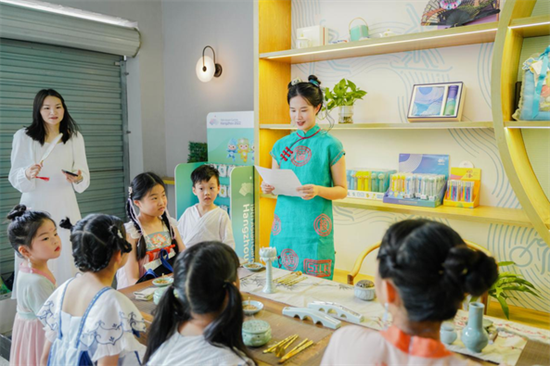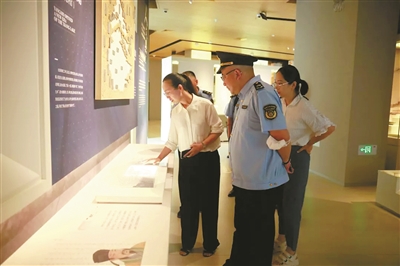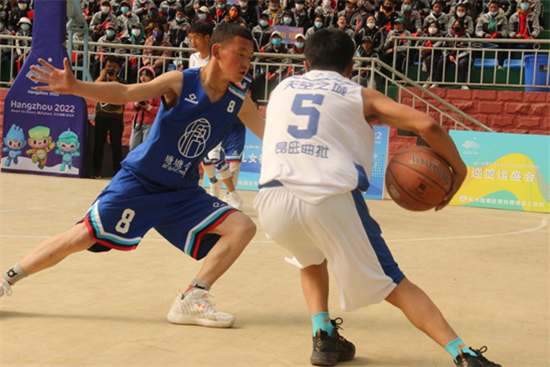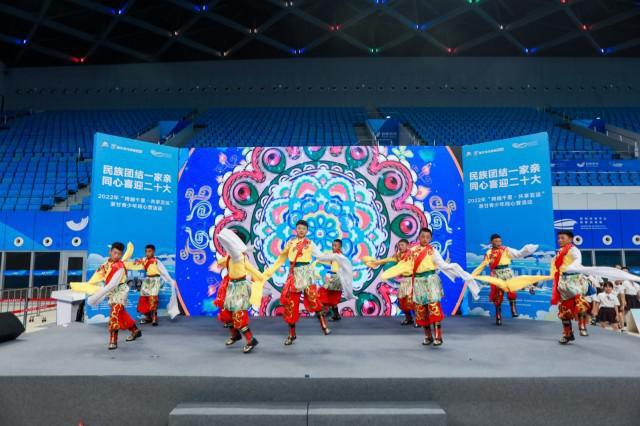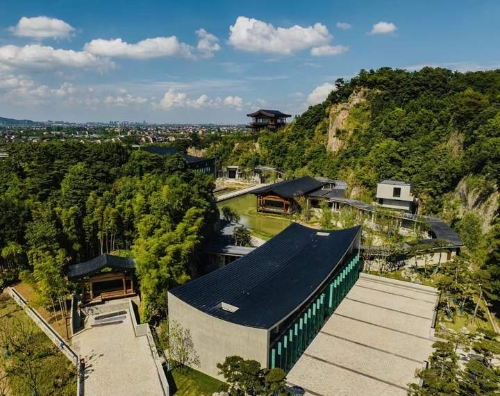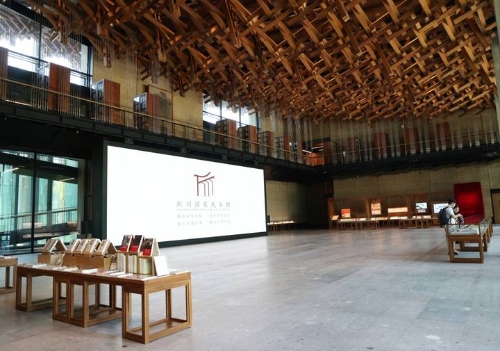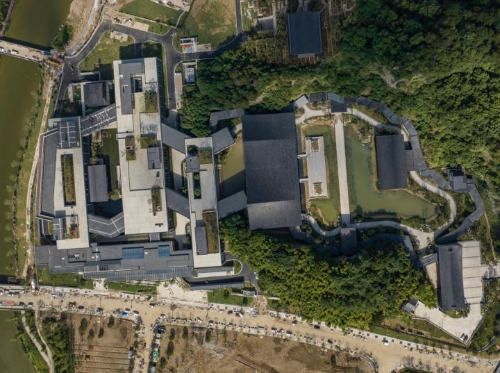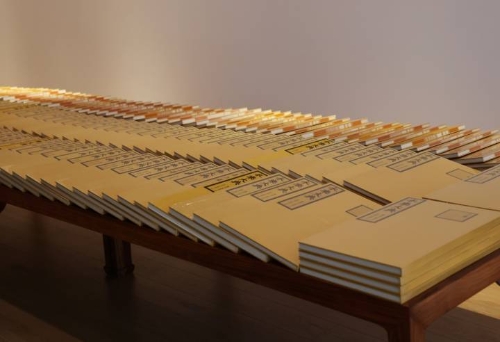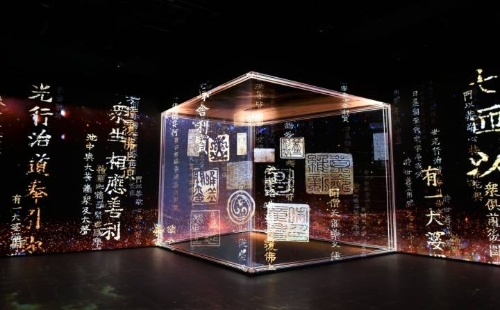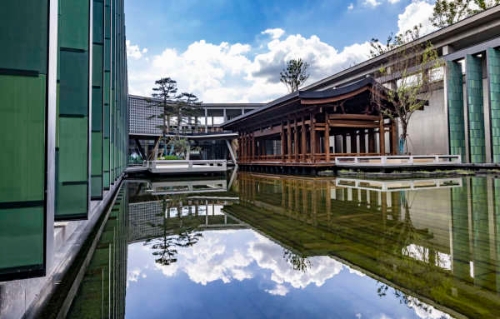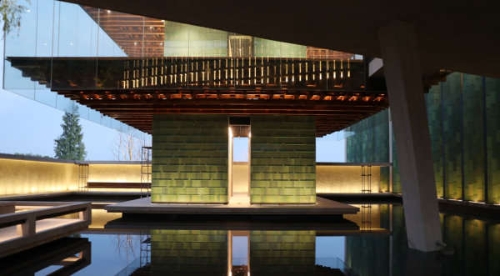Zhejiang Museum has initiated a 100-museum project to invigorate the enriched Song Dynasty (960-1279) cultural legacy across Zhejiang Province. The first stage has been set up in a Southern Song Imperial Kiln Museum in Hangzhou and involves interactive activities and 63 sets of antiques.
“Usually, a temporary exhibition only lasts three to six months. Now, we hope the 100-museum project could last over 10 years. Every city in Zhejiang Province has its own distinct Song Dynasty heritage worth deeper research and learning,” said Ji Yunfei, vice curator of Zhejiang Museum.
The project begins with the Southern Song Imperial Kiln Museum, the first museum based on a millennium-old kiln in the country. It is a vital venue showing Song Dynasty porcelains.
In this epoch, the royal court established the Imperial Kiln in Hangzhou to fire ceramics for the royal family. Their elegant shapes and jade-like textures were the hallmarks of their manufacturing techniques, turning Zhejiang into an important production center of sought-after porcelain commodities in ancient China.
Except for top-notch Song Dynasty porcelains, the organizers also focus on scholars’ thoughts to show the open and inclusive society of the era.
One millennium ago, woodblock-printing technology accelerated the spread of literature and knowledge, evidenced here by the displayed ancient books covering literature, religion, technology and agriculture.
Hangzhou’s booming printing industry and its capital status made it a mecca for scholars and literatus. The growth of the population and a prosperous economy, as well as a widely distributed social consciousness, led to a thriving Hangzhou during the Southern Song Dynasty (1127-1279).
The prosperity also changed women’s lives during the period. Throughout feudal dynasties, women were banned from going to school, and illiterate females were often considered to have better morals. However, open-minded families during the Song Dynasty made great strides, allowing their daughters and wives to study literature, calligraphy and painting.
A batch of cultured women began to realize their self-value through the arts and heightened their social status by improving their literacy, including Li Qingzhao, Lin Youyu and Wu Zhiduan.
The exhibition features women painters’ ink-wash works, through which visitors get a glimpse of the constraints on women’s spirituality and emotions. Their works differentiate from men’s by virtue of subtle emotions, delicate strokes and elaborate layouts, all now revered by modern connoisseurs.
Women also were allowed to attend keju (imperial examination), an exam exclusive to men in previous dynasties. During the period, officials selected by their exam results became dominant in the bureaucracy, so keju was an opportunity to become a high-ranking government official.
The Song period’s openness and inclusiveness was also embodied by the thriving maritime trade.
The royal court even enacted a law to guide the industry, which is believed to be the earliest maritime trade law in the world.
Official departments were established in Hangzhou, Wenzhou, Guangzhou and Quanzhou to dispatch ambassadors and welcome diplomats from other countries.
The 100-museum project is intended to explore the art, economy, culture, agriculture and technology of the Song period and present a well-rounded picture of the heyday of ancient China to young and emerging generations.
In a bid to attract more teenagers, the Hangzhou kiln exhibition is designed with free interactive activities and lectures on Tuesdays, Thursdays, Saturdays and Sundays through August 31. Visitors need to make a reservation as seats are limited.
At the exhibition, children can experience rubbing stone inscriptions. The ancient scholars invented rubbing methods to reproduce stone inscriptions on paper, the only media available centuries ago to spread the words on stone inscriptions.
Visitors will be able to partake in an authentic and entertaining puppet show, arrow-throwing game (touhu) and woodblock printing – activities that were popular among locals many centuries ago.
“This exhibition not only displays ancient artworks, but also shows the lifestyle and aesthetics of our ancestors,” Ji said.
“Museums should play a role in public education. The exhibits and stories should be accessible to people. The 100-museum project is going to integrate exhibition with education and spread the Song Dynasty history among young generations.”
100-museum project exhibition
Date: Through September 21, closed on Mondays
Address: 60 Nanfu Rd
Admission: Free


